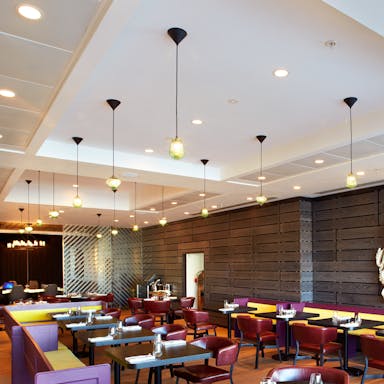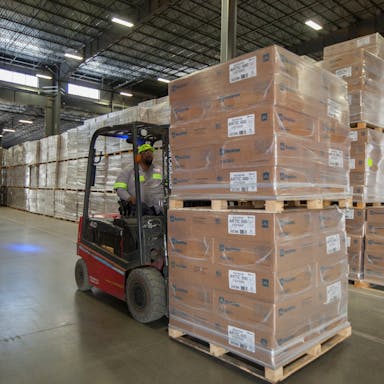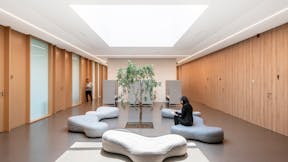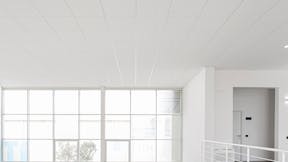At the Eichendorff secondary school in Gottmadingen near Konstanz, students and staff are enjoying a new building constructed with modern passive house concepts. The state-of-the-art features include mechanical night ventilation, concrete core activation for thermal mass control, and top of the line acoustic solutions from Rockfon.
The Complex Interplay among Building Factors
The construction team was successful in creating a space with good acoustics and thermally effective masses. The "Acoustics in living spaces for upbringing and education" guidelines from the Fraunhofer Institute and the DIN 18041 recommendations were major factors in this success.
In addition, concrete core activation necessitates that a large majority of the ceiling be openly connected to the room air. Therefore, in many places it was not possible to install closed suspended acoustic ceilings.
The planned night ventilation will only work if there are enough open areas in the building that can act as thermal storage. In order to install the ventilation ducts, it requires a ceiling box, which took up about one third of the floor space in the classrooms.
Moreover, the flooring was primarily durable industrial parquet, which hardly contributes to sound absorption. This means that there was only a limited amount of area available to take sound-absorbing measures.
Rockfon Eclipse Installed at Various Shapes, Sizes, and Heights
Even with such modern and sophisticated building concepts, excellent acoustics can be achieved with a dry construction technique. The underside of the ceiling boxes in the entire school building, in which the ventilation technology is installed, was designed as a perforated plasterboard ceiling.
Different types of Rockfon Eclipse ceiling islands were installed throughout the school. In the classrooms, Eclipse in square shape were used and hanged in different heights, bring character to the space. Meanwhile, round ceiling islands were utilised in the open learning zones and central hall/canteen area.
The panels and doors of the cupboard walls on the partition walls to the corridor are perforated for sound absorption. The volume of the cupboard walls and the ceiling case ensures the necessary absorption of low frequencies, which the ceiling panels are less able to fulfill on principle.
Volker Weiß, consulting engineer at Stahl+Weiß PartGmbB, Freiburg, added: "The rest of the ceiling surface was covered directly with Rockfon Blanka® Activity, which has a thickness of 40 millimeters. The installation for opening up the student workstations takes place below the activated area. Depending on the type of room, reverberation times of 0.5 to 0.6 seconds are achieved.”
Acoustic Simulations in 3D model
Volker Weiß further explained: “To ensure optimal acoustics for the auditorium and hall, which feature a central open staircase spanning all floors, simulations were run and examined using a 3D model. In addition to absorption surfaces that were already described, we also installed acoustic solutions on the walls and façade.
The average reverberation time is around 1.1 seconds. The very good absorption values of the products used make it possible to meet the high requirements for room acoustics and to activate part of the ceiling surface as a thermal buffer. This ensures optimal conditions for good teaching and learning in the new rooms."
Eichendorff-Realschule Gottmadingen
Rielasinger Str. 28
Gottmadingen
Germany











